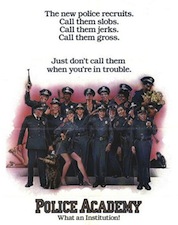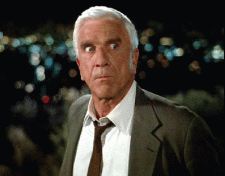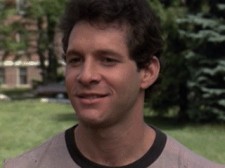 There’s a moment in this Adam Sandler dramedy when his titular character, exhausted and at his wit’s end, looks to the sky and asks for a break. Just one. Because his life is just too difficult. You see, his life is so awful that his incredible job, multi-story suburban house, impossibly hot wife, near-perfect kids who always get along and just love to color pictures together, loyal dog, and multitude of electronics, clothes, furniture, and other such possessions are just too much for him to bear. No, Michael Newman (Sandler) decides he’s had it up to here with all his modern conveniences and comfortable life because it’s just too overwhelming and oh-so-stressful. So how to fix it? Of course the only answer is to buy even more crap to throw on the pile, in the form of a universal remote that will finally allow him to get a handle on his television, DVD player, satellite TV, and toy helicopters that are just plaguing his enviable first-world life.
There’s a moment in this Adam Sandler dramedy when his titular character, exhausted and at his wit’s end, looks to the sky and asks for a break. Just one. Because his life is just too difficult. You see, his life is so awful that his incredible job, multi-story suburban house, impossibly hot wife, near-perfect kids who always get along and just love to color pictures together, loyal dog, and multitude of electronics, clothes, furniture, and other such possessions are just too much for him to bear. No, Michael Newman (Sandler) decides he’s had it up to here with all his modern conveniences and comfortable life because it’s just too overwhelming and oh-so-stressful. So how to fix it? Of course the only answer is to buy even more crap to throw on the pile, in the form of a universal remote that will finally allow him to get a handle on his television, DVD player, satellite TV, and toy helicopters that are just plaguing his enviable first-world life.
Maybe it’s just me, but I can hardly get past the exposition of a movie that asks me to identify with characters like this. They live lives that are so contrived, so perfect, that when the inevitable single problem crops up that they just can’t deal with, my brain just checks out. Click certainly isn’t the first movie to be guilty of this, but it is the most recent one I have watched. And this phenomenon gets under my skin every time.
If you’re an Adam Sandler fan, you’ll probably find a lot to like here: sophomoric jokes, kids using bad language (gee, an eight-year-old said a swear word…it’s funny!), empty-headed women with no inherent worth or ambition and who exist solely to support the childlike men in their lives…basically standard Hollywood fare. Not that I’m jaded or anything, it’s just that this movie brings nothing new to the table except for a wild-haired Christopher Walken who steals every scene he is in.
The remote that Newman ends up buying from Bed Bath and Beyond, in what is one of the most shameless examples of product placement ever committed to celluloid: after driving past a Best Buy and Target, both of which are closed, he ends up at BB&B where he spends several minutes admiring the aisles filled with products gallantly catering to suburban consumerism before walking down a hallway simply labeled “Beyond.” It’s as if the film itself is interrupted by a lengthy commercial for the strip-mall purveyor of fluffy towels and soda-makers. I understand that product placement is necessary in many cases to help finance modern films, but this was just ridiculous, and it exemplified the over-the-top nature of the entire movie. Soon enough Newman is standing in a warehouse with Walken, an eccentric character with a magical remote that allows the user to rewind, pause, mute, and fast-forward his or her way through life.
It’s the kind of gag that would have worked well in a five-minute Saturday Night Live sketch, but quickly wears thin here. Watching Newman mute his ever-nagging wife is kind of funny once, but the joke goes on and on and on. Fast-forwarding through awkward dinners, pausing his son’s backyard baseball game and re-aiming the ball so it smacks the annoying neighbor bully directly in the face…and this continues for pretty much the entire rest of the movie. Oh sure there’s a moral lesson about spending time with family that’s laid on so thick at the end I could barely stop my eyes from rolling, but most of the film is about as boring and predictable as almost any other Sandler flick. Nothing new to see here, folks.  Move along.
Rating:[Rating:1.5/5]





















